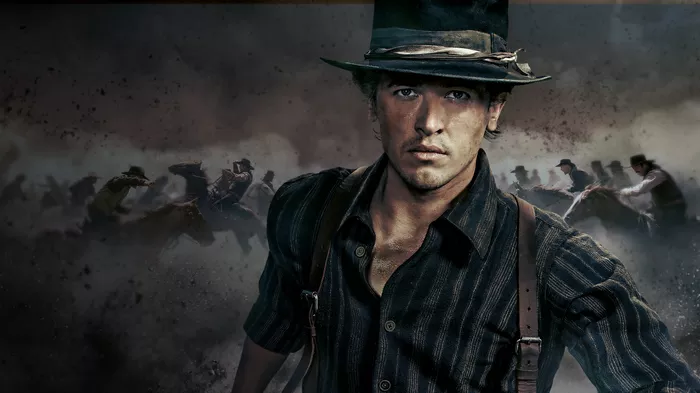The Genesis of Conflict: The Battle for Land and Power in the New Mexican Territory
The Lincoln County War was not merely a clash between rival factions; it encapsulated the profound struggle for control over the untamed terrain of the New Mexican territory. Emerging in the wake of the American Civil War, the region became a hotbed of economic opportunity, attracting a diverse array of entrepreneurs and opportunists eager to capitalize on the burgeoning trade and commerce. The seeds of conflict were sown in the fertile soil of ambition and territorial expansion, as the Murphy-Dolan faction, led by Lawrence Murphy and James Dolan, sought to consolidate their dominance by establishing a monopolistic control over the region’s key commercial activities. Conversely, the upstart Tunstall-McSween faction, led by John Tunstall and Alexander McSween, embarked on a bold and audacious quest to challenge the established order and carve out their own path to economic prosperity and prominence.
The Machinations of Greed: The Struggle for Monopoly and Supremacy
Central to the fabric of the Lincoln County War was the relentless pursuit of economic supremacy and monopolistic control over the region’s lucrative enterprises and resources. The Murphy-Dolan faction’s fervent determination to maintain their stranglehold on the burgeoning economy of the New Mexican territory fueled a climate of fierce competition and cutthroat business tactics, setting the stage for a ruthless and protracted struggle for power and control. In contrast, the Tunstall-McSween alliance emerged as a formidable challenger to the established order, intent on disrupting the status quo and dismantling the monopolistic grip of their rivals. The convergence of conflicting interests and the insatiable hunger for wealth and influence laid the groundwork for a tumultuous and violent conflict that would leave an indelible mark on the annals of American history and folklore.
Tragedy and Retribution: The Climactic Moments of the Lincoln County War
The tumultuous narrative of the Lincoln County War reached its tragic crescendo through a series of pivotal events that underscored the profound depths of violence and retribution permeating the conflict. The untimely murder of John Tunstall, a key figure aligned with the Tunstall-McSween faction, served as a catalyst for the escalation of hostilities, plunging the region into a maelstrom of bloodshed and turmoil. The retaliatory killing of Sheriff William Brady, a staunch ally of the Murphy-Dolan faction, by the Regulators further fueled the flames of vengeance and retribution, exacerbating the already volatile climate of the New Mexican territory. The brutal burning of Alex McSween’s house, a poignant symbol of the relentless pursuit of power and dominance, marked a harrowing turning point in the conflict, leaving an indelible scar on the landscape and the collective consciousness of the American West.
The Legacy of Infamy: Billy the Kid and the Culmination of the Lincoln County War
Amid the chaos and carnage that defined the tumultuous narrative of the Lincoln County War, the enigmatic figure of Billy the Kid emerged as a central protagonist whose enduring legacy has become intrinsically intertwined with the events that shaped the conflict. William H. Bonney, famously known as Billy the Kid, embodied the complexities of the American frontier, a landscape characterized by lawlessness, moral ambiguity, and the relentless pursuit of self-preservation. His involvement in the Lincoln County War, punctuated by acts of defiance, retribution, and unrelenting pursuit of justice, left an indelible mark on the fabric of American folklore and historical narrative. As the war drew to a close with the fateful demise of Billy the Kid at the hands of Sheriff Pat Garrett, the legacy of the conflict endured as a poignant testament to the enduring conflicts and moral ambiguities that define the tumultuous and unforgiving landscapes of the American West, leaving an indelible imprint on the annals of American history and folklore.

